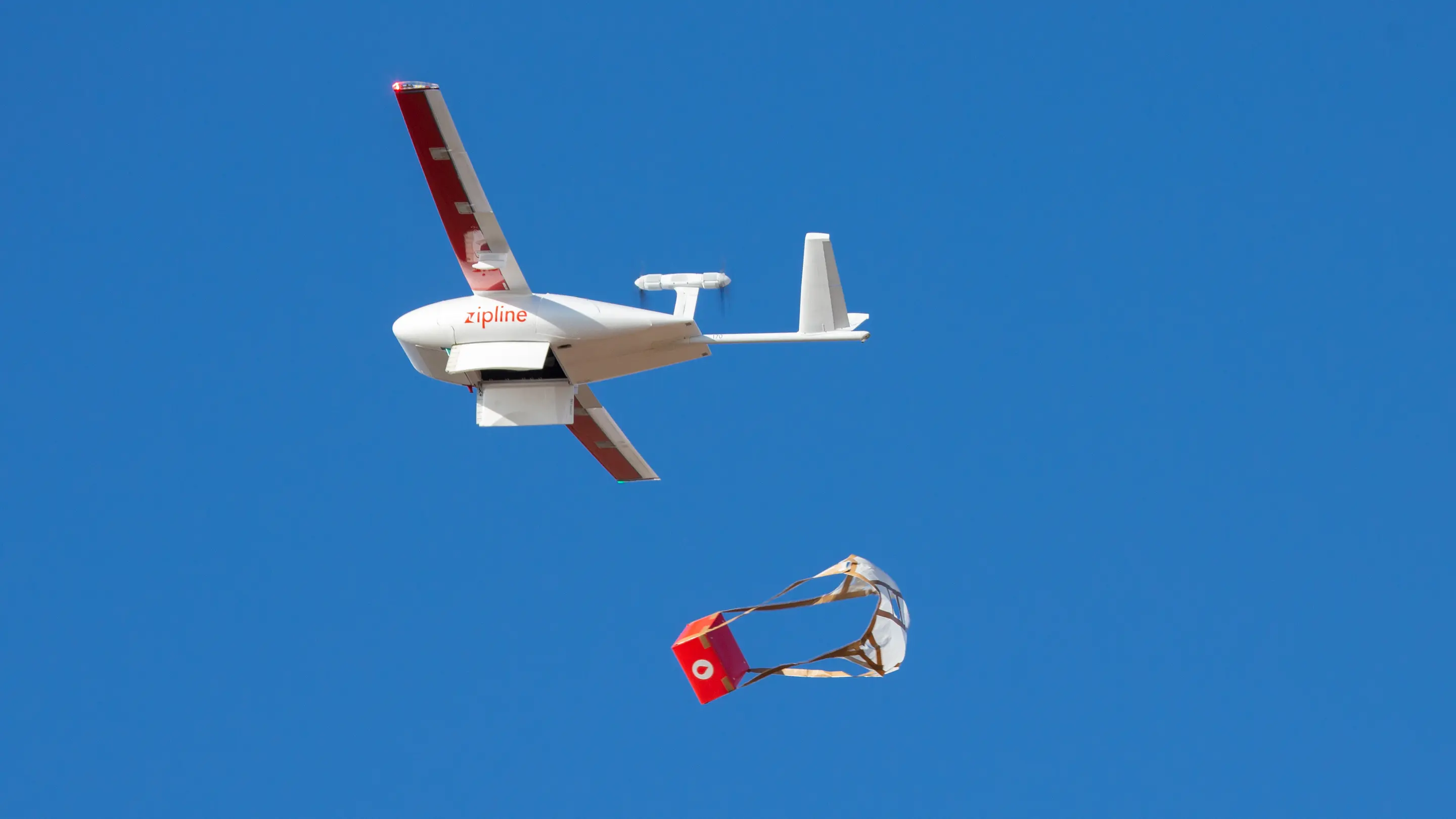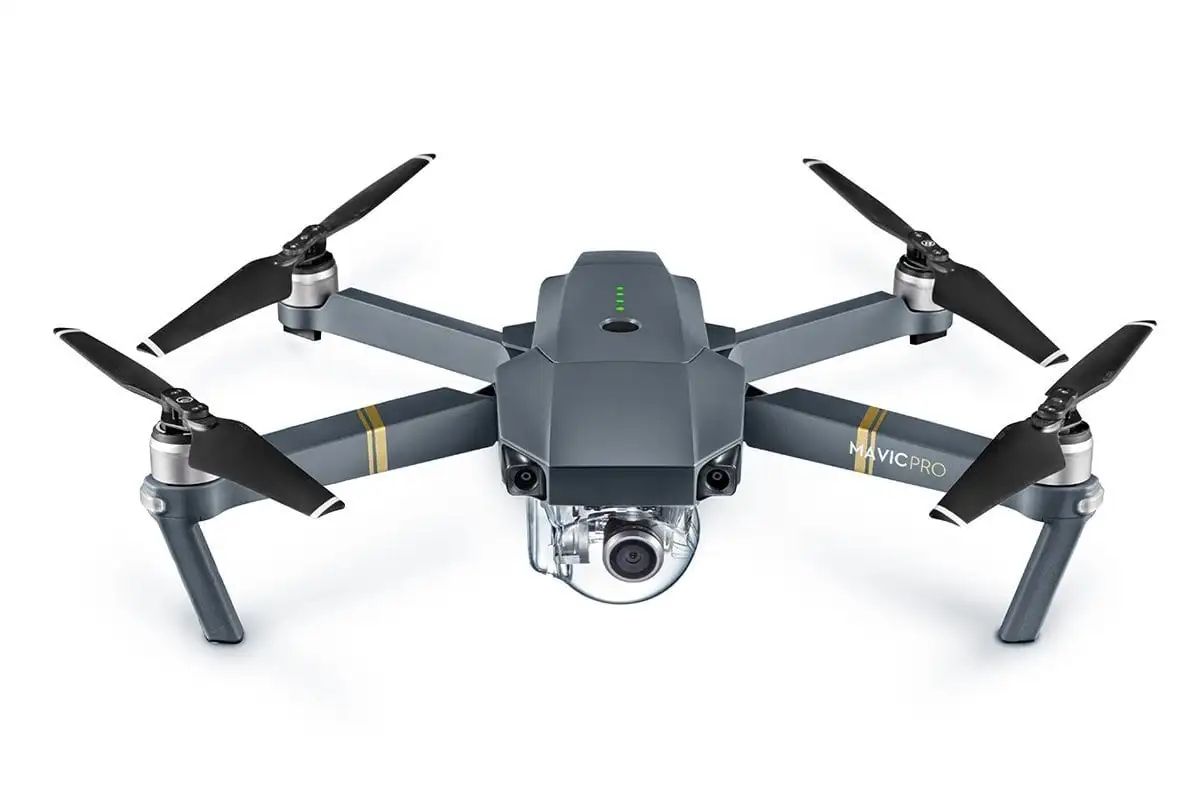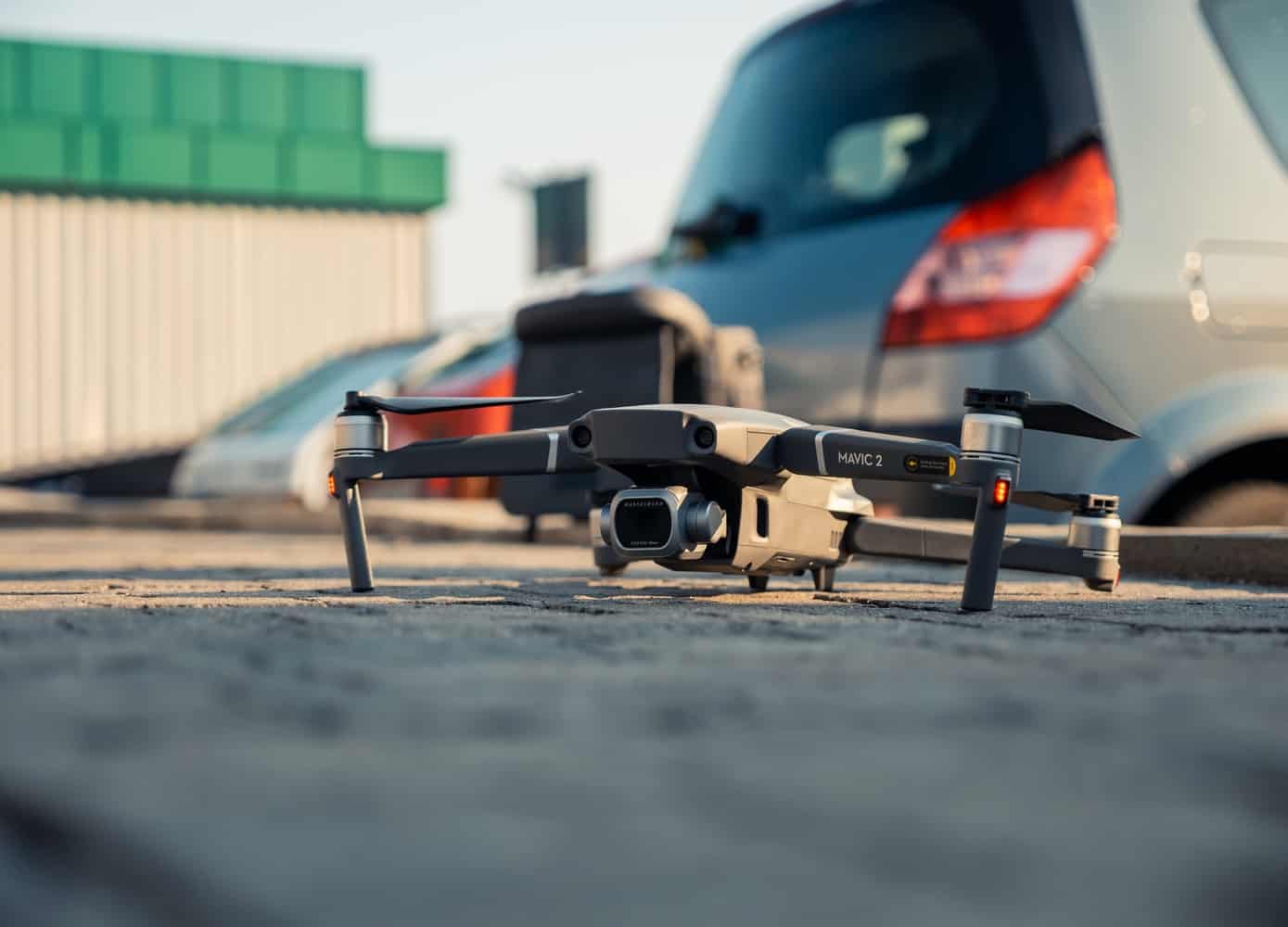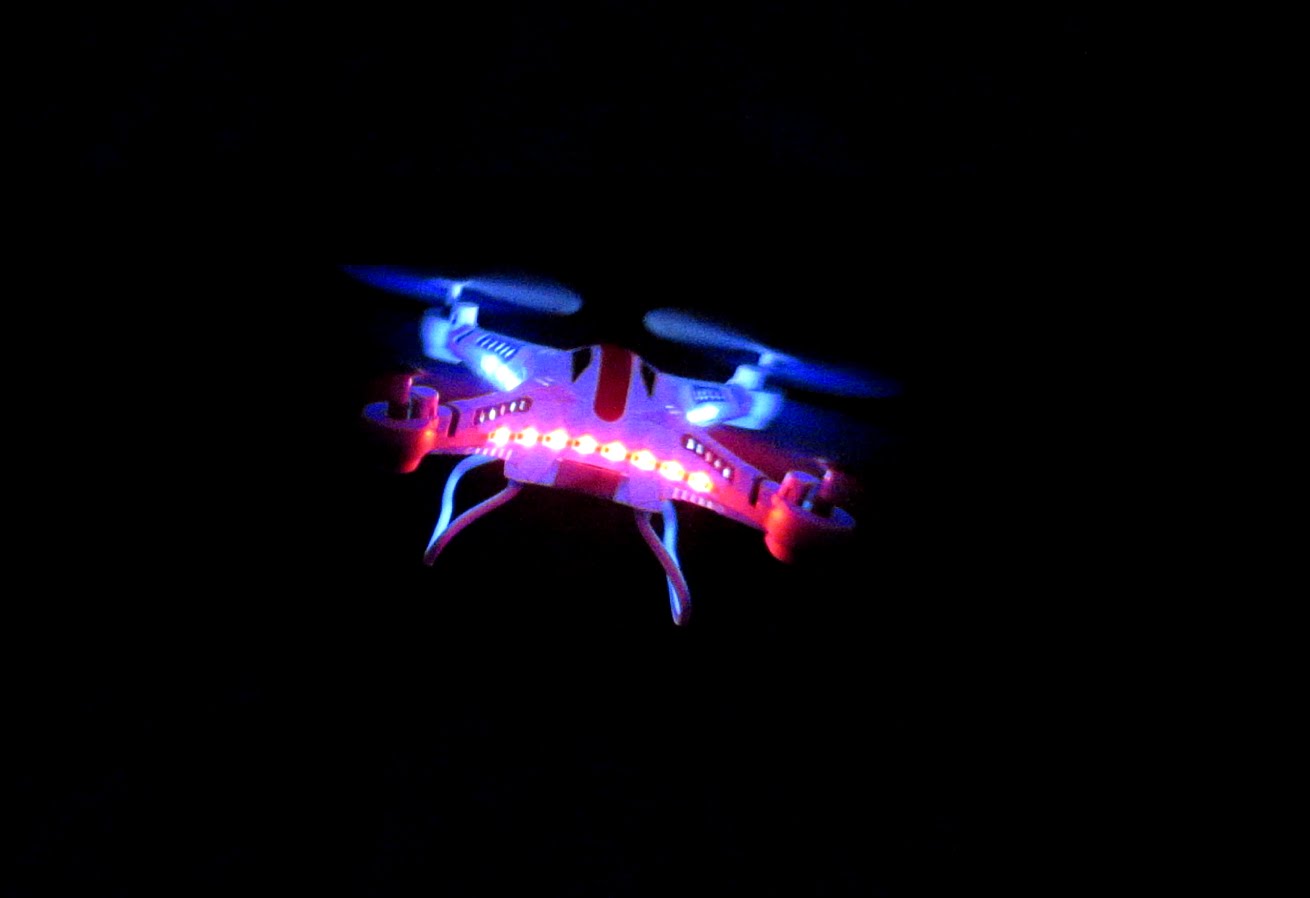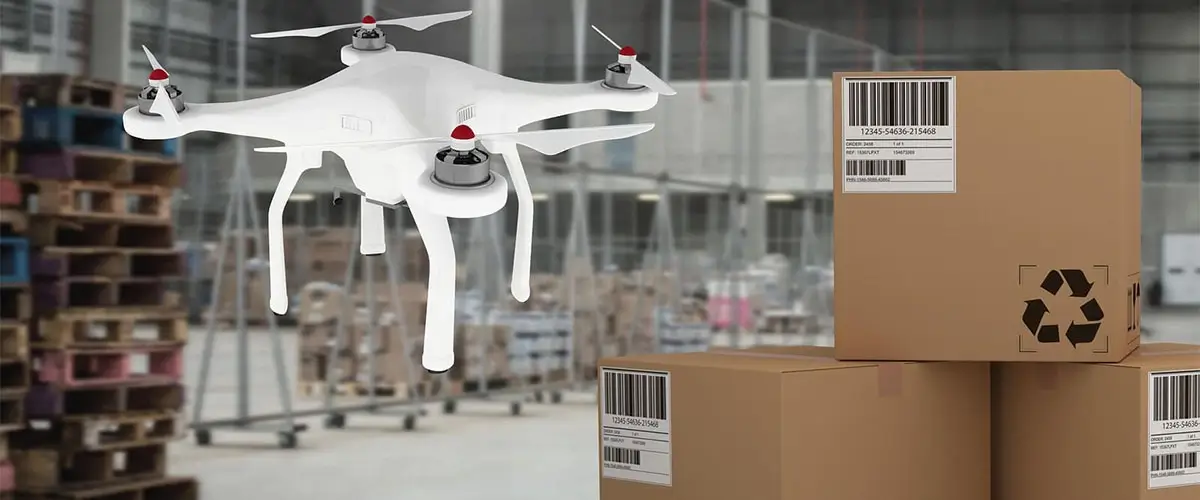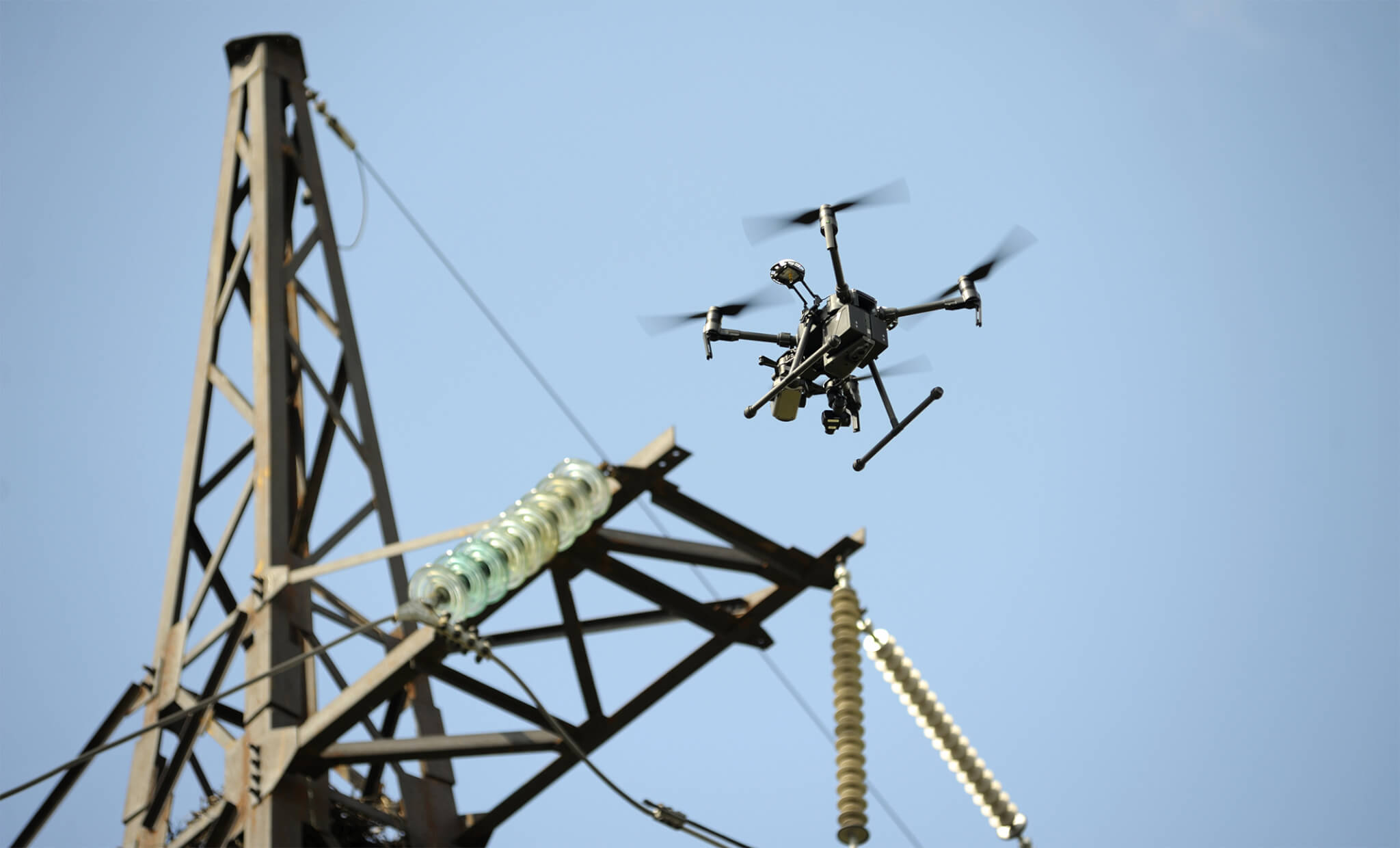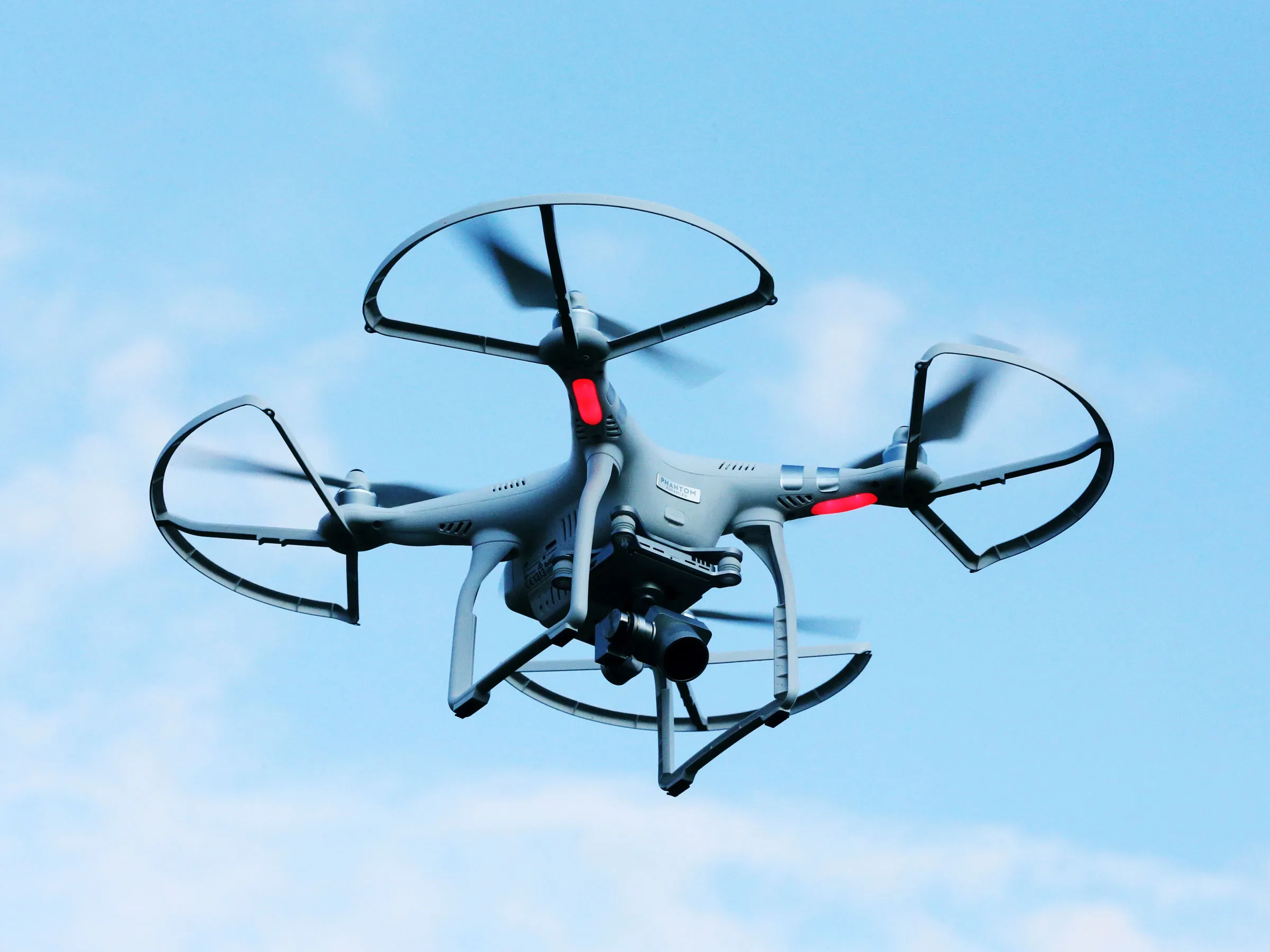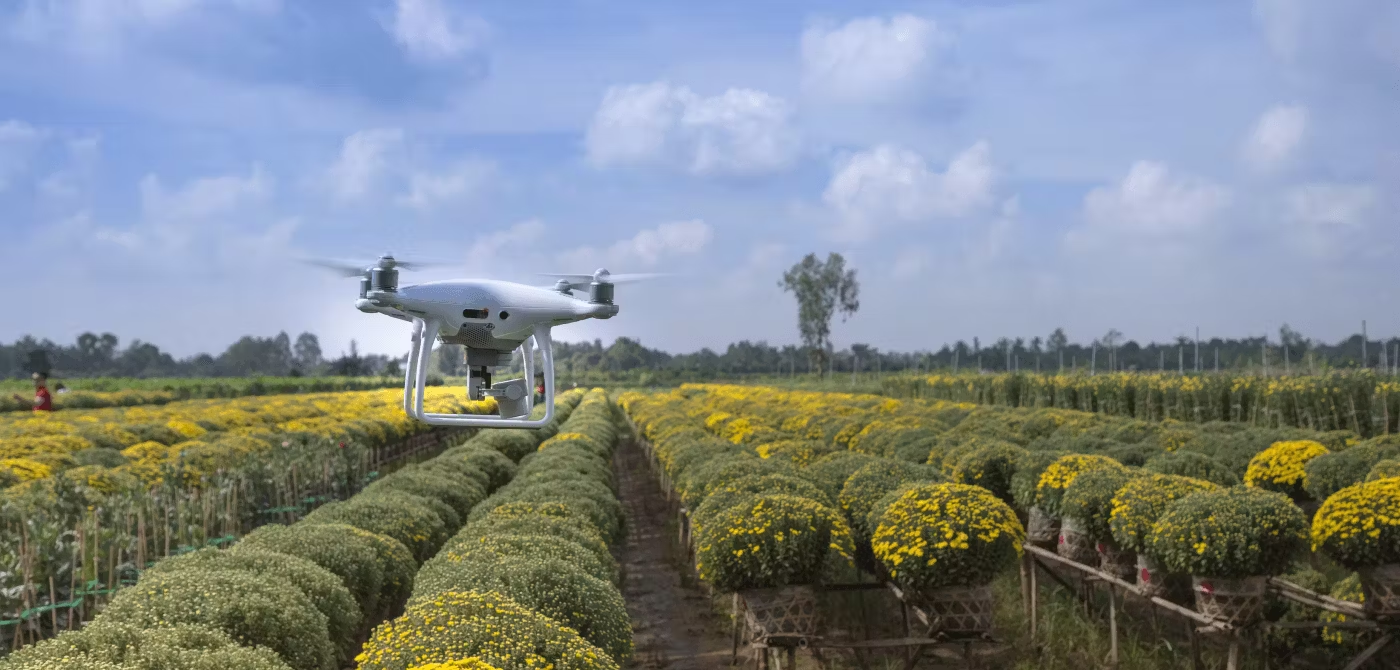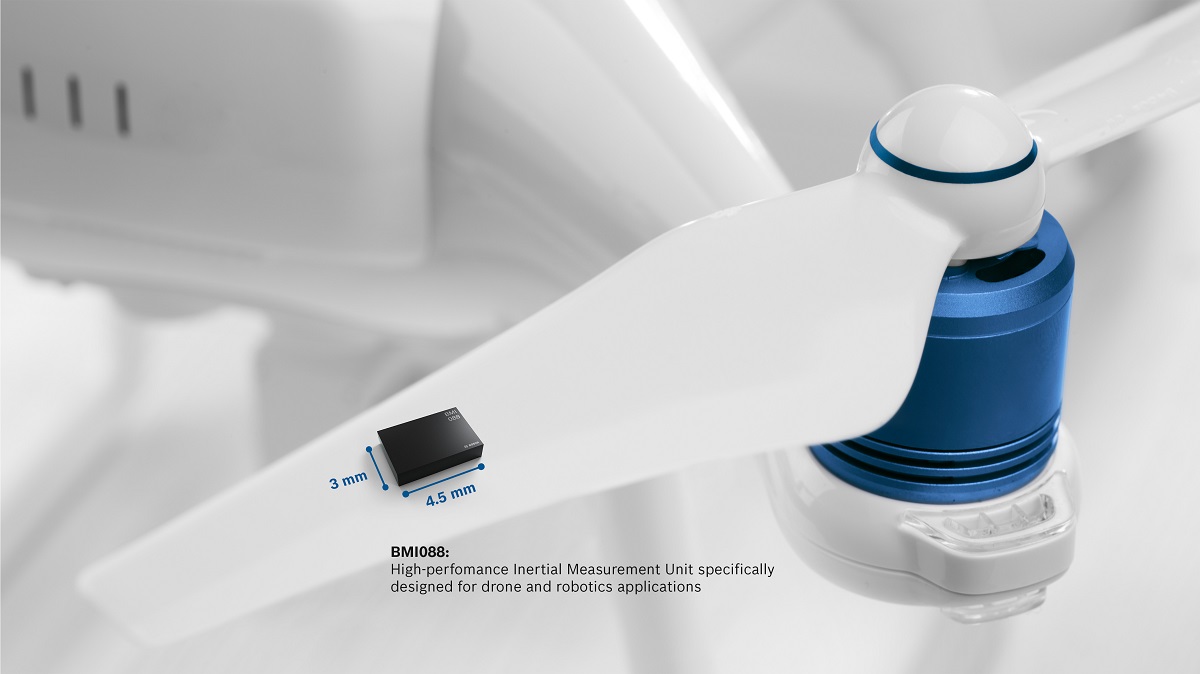Introduction
Drones have become increasingly popular for various purposes such as aerial photography, videography, and recreational flying. However, as the use of drones continues to rise, so does the concern of privacy and security. Drone detection technology has been developed to identify and track drones in order to ensure safety and prevent unauthorized activities.
In this article, we will explore the concept of drone detection and the importance of avoiding drone detection. We will also provide some useful tips on how to stay undetected while flying your drone.
When it comes to drone detection, it is crucial to understand the different methods used to identify drones. These methods can include radar systems, radio frequency scanners, acoustic sensors, and even visual detection. All these technologies work together to create a comprehensive system that can detect and track drones in real-time.
Now, you might be wondering, why should you worry about drone detection? The answer lies in the potential consequences of being detected. Depending on your location and the nature of your drone activities, being detected by authorities or individuals could lead to legal implications, privacy breaches, or even threats to national security.
Whether you are a professional drone pilot or an enthusiast enjoying recreational flights, it is essential to know how to avoid drone detection. By following some simple guidelines, you can protect your privacy, adhere to local regulations, and continue flying your drone with peace of mind.
Understanding Drone Detection
Drone detection refers to the process of identifying and tracking unmanned aerial vehicles (UAVs) in the airspace. This technology has become increasingly important as drones are being used in various industries and recreational activities.
There are several methods used for drone detection, each with its own strengths and limitations. One common method is radar, which uses radio waves to detect and track the movement of objects in the airspace. Radar systems can provide real-time information about the location, speed, and altitude of the drone.
Another method is radio frequency (RF) detection. RF scanners monitor the radio frequency spectrum and can detect the communication signals between the drone and its controller. This can help identify the presence of a drone in the area.
Acoustic sensors are also used for drone detection. These sensors can detect the unique sound signatures produced by drones, allowing for early detection and tracking.
Visual detection involves the use of cameras and computer vision algorithms to identify drones based on their visual appearance. This method can be effective in well-monitored areas with clear line of sight.
Drone detection systems often combine multiple detection methods to provide a comprehensive and accurate picture of the drone’s location and activity. These systems are utilized by various entities including law enforcement, security agencies, and even airports to ensure safety and security.
It is important to note that drone detection is not limited to detecting unauthorized or malicious activities. In some cases, drone detection is used for monitoring and managing authorized drone flights, such as those conducted for commercial purposes or research.
By understanding the various methods and technologies used for drone detection, drone operators can better assess the risks and take appropriate measures to avoid detection. In the following sections, we will explore some tips and techniques to help you stay undetected while flying your drone.
Importance of Avoiding Drone Detection
Avoiding drone detection is crucial for maintaining privacy, avoiding legal consequences, and ensuring the safety of yourself and others. Let’s explore the importance of this further.
1. Privacy Protection: Drones equipped with high-resolution cameras can capture images and videos from an aerial perspective. While this is useful for photography and videography, it can also invade the privacy of individuals if misused. By avoiding drone detection, you can prevent unauthorized surveillance and protect the privacy of those around you.
2. Legal Compliance: Flying a drone in certain areas or above a certain altitude might violate local or national laws. When detected, authorities may confiscate your drone, issue fines, or even pursue legal action. By staying undetected, you can ensure that you are operating within the legal boundaries and avoid facing legal consequences.
3. Safety and Security: In some cases, drones can pose safety risks if they fly into restricted airspace or interfere with other aircraft. By avoiding drone detection, you can minimize the potential danger to yourself, other pilots, and the general public. It is crucial to fly responsibly and follow safety guidelines to prevent accidents and mishaps.
4. Protection from Theft or Damage: Unfortunately, there have been instances where drones have been stolen or damaged by individuals who detect their presence. By staying undetected, you reduce the risk of theft or vandalism, ensuring the security of your drone equipment.
5. Reputation Preservation: If you are using a drone for professional purposes, such as aerial photography or videography, avoiding detection is essential for maintaining your reputation as a responsible and ethical operator. Being caught conducting unauthorized flights or invading privacy can damage your professional reputation and result in a loss of client trust.
By understanding the importance of avoiding drone detection, you can take the necessary precautions to fly responsibly and minimize the risks associated with drone activities. In the following sections, we will provide you with some practical tips on how to stay undetected while flying your drone.
Tips to Avoid Drone Detection
Flying your drone while staying undetected requires careful planning and adherence to certain guidelines. Here are some useful tips to help you avoid drone detection:
- Fly in Remote Areas: Choose remote locations with minimal human activity and surveillance. This reduces the chances of your drone being detected by people or monitoring systems.
- Fly Low: Avoid flying your drone at high altitudes where it might catch the attention of radar systems or other detection technologies. Flying low to the ground can make it harder for detection systems to spot your drone.
- Use Manual Mode: Utilize the manual mode on your drone instead of relying on automatic flight modes. This allows you to have more control over your drone’s flight path and reduces the chances of predictable patterns that can be detected.
- Disable Flight Logs: Some drones come with a flight log feature that records flight data, such as GPS coordinates and flight duration. Disable this feature to prevent the possibility of your flight data being accessed or traced.
- Modify Drone Appearance: Customize the appearance of your drone to make it less recognizable. This can be done through DIY modifications or by using drone skins or wraps to change the look of your drone.
- Use Encryption: Encrypt the communication between your drone and its controller. This ensures that the signals transmitted between the two devices cannot be easily intercepted or deciphered by unauthorized parties.
- Learn Local Laws and Regulations: Familiarize yourself with the local laws and regulations regarding drone flight in your area. Understanding the restrictions and permissions will help you avoid areas where detection systems might be in place and comply with legal requirements.
- Be Aware of Anti-Drone Technology: Stay informed about the latest advancements in anti-drone technology. Knowing what detection systems are being used can help you adjust your flying techniques and avoid detection.
By following these tips, you can improve your chances of flying your drone undetected and minimize the risks associated with unauthorized activities. Remember to always prioritize safety, privacy, and compliance with local regulations while enjoying the wonders of drone flight.
Fly in Remote Areas
One of the most effective ways to avoid drone detection is to fly in remote areas with minimal human activity and surveillance. Here are some key points to consider when choosing remote locations for your drone flights:
Minimal Human Activity: Look for areas where there are fewer people present. This could include remote countryside, deserted beaches, or isolated parks. By flying in areas with minimal human activity, you reduce the chances of your drone being noticed or reported.
Low Surveillance: Avoid locations that are heavily monitored by security cameras or where law enforcement presence is common. These areas are more likely to have detection systems in place that can detect and track drones. Opt for places where surveillance is limited or non-existent.
Consider Restricted Areas: Be cautious of restricted areas such as military installations, government buildings, or private properties with no-fly zones. These areas often have stricter security measures in place and are more likely to have advanced detection systems.
Research Local Regulations: Familiarize yourself with local regulations and airspace restrictions. Some areas might have specific no-fly zones or guidelines for drone operations. Adhering to these regulations not only helps you avoid detection but also ensures you are flying safely and responsibly.
Scout the Location: Before flying, visit the location in person (if possible) or utilize online mapping tools to get a better understanding of the surroundings. Look for areas that provide natural barriers or visual obstructions, such as hills, trees, or buildings. These can shield your drone from potential detection.
Consider Day and Time: Choose to fly your drone during times when there are fewer people around, such as early mornings or weekdays. This reduces the chances of your activities being noticed and reported to authorities.
Respect the Environment: When flying in remote areas, remember to respect the environment and wildlife. Avoid disturbing fragile ecosystems or wildlife habitats. Fly at a safe distance from wildlife and be mindful of your impact on the surroundings.
By selecting remote areas for your drone flights and being mindful of your surroundings, you can significantly reduce the risk of detection by both individuals and monitoring systems. Remember to always prioritize safety and respect for the environment while enjoying your drone flights.
Fly Low
When it comes to avoiding drone detection, one effective strategy is to fly your drone at lower altitudes. Here are some key points to consider when flying low:
Less Visibility: Flying your drone closer to the ground reduces its visibility from a distance. This makes it more challenging for detection systems, such as radar or visual detection, to detect your drone. Stay below the tree line or other visual obstructions to further minimize visibility.
Avoid Radar Detection: Many detection systems rely on radar technology to track drone movements. By flying low, you decrease the chances of your drone being detected by radar systems. This is especially important if you are flying in areas with strict radar monitoring.
Blend with Surroundings: Flying low allows your drone to blend with the surroundings. Choose flight paths that keep your drone closer to natural elements like trees or buildings. This makes it more challenging for visual detection systems to distinguish your drone from the background.
Maintain Line of Sight: Flying at lower altitudes provides better visibility and control over your drone. By keeping your drone within your line of sight, you can navigate obstacles more effectively, prevent collisions, and also lessen the chances of your drone being detected by others.
Avoid Air Traffic: Flying low also helps you avoid potential interference with manned aircraft. By staying below their typical flight altitudes, you minimize the risk of being detected by pilots or air traffic control systems. Always prioritize safety and ensure that you are aware of any local airspace restrictions.
Consider Your Drone’s Limitations: Keep in mind that not all drones are designed to fly at extremely low altitudes. Understand the specifications and capabilities of your drone, including its minimum safe altitude and descent rate. Operating within these limits ensures both the safety of your drone and successful avoidance of detection.
Check Local Regulations: Be aware of any height restrictions specified by local aviation authorities. Always adhere to these regulations for safe and legal drone operations. Familiarize yourself with the altitude limits set for recreational or commercial drone flights in your area.
Remember, while flying low can help you evade detection, it is essential to strike a balance between staying undetected and following safety guidelines. Always prioritize the safety of yourself, others, and any surrounding aircraft when planning your drone flights.
Use Manual Mode
Using the manual mode on your drone can be a helpful strategy to avoid detection. Here’s why manual mode is essential to stay undetected:
Flight Pattern Variation: When you fly your drone in an automatic mode, it often follows predetermined flight patterns that can be easily predicted and detected. By using manual mode, you have more control over your drone’s flight path and can vary your movements, making it harder for detection systems to anticipate your drone’s next move.
Avoid Predefined GPS Routes: Many drones have GPS functionality that enables them to follow pre-programmed routes. While this can be useful for specific filming or mapping purposes, it also makes your flight predictable. By using manual mode, you can avoid following predefined GPS routes and instead fly your drone in a more unpredictable manner.
Adapt to the Environment: When flying in manual mode, you can adapt your flight to the specific environmental conditions. By observing your surroundings and adjusting your drone’s altitude, speed, and direction accordingly, you can mimic natural movements and behaviors, making it less likely for anyone or any detection system to suspect abnormalities.
Stealth Mode: Manual mode allows you to fly your drone more quietly and efficiently. By manually controlling the throttle and navigation, you can avoid sudden changes in speed or direction that could attract attention or trigger detection systems. This enables you to maintain a low-profile flight and stay undetected.
Avoiding Predictable Flight Paths: Many drones have the tendency to fly in straight lines or take circular patterns while in automatic mode. These patterns can be easily recognized and raise suspicion. By using manual mode, you can navigate your drone in a more random and erratic manner, making it challenging for detection systems to track your drone’s flight path.
Enhanced Control: Manual mode provides you with greater control over your drone’s movements. This allows you to respond quickly to unexpected circumstances, such as the presence of other drones or individuals who may detect your drone. Having this level of control can help you navigate obstacles and avoid potential detection.
Practice and Familiarize: Before flying in manual mode, it is important to practice and familiarize yourself with the controls and handling of your drone. Ensure that you have a good understanding of how to maneuver your drone safely and confidently. This will help you master manual flight and make more informed decisions during your flights.
By using manual mode effectively, you can take control of your drone’s flight, minimize predictability, and increase your chances of staying undetected. However, always prioritize safety and ensure that you have the necessary skills and experience to operate your drone manually.
Disable Flight Logs
Disabling flight logs on your drone is a crucial step in avoiding detection and maintaining your privacy. Here’s why disabling flight logs is important:
Avoiding Digital Traces: Flight logs record important data such as GPS coordinates, flight duration, and altitude. If these logs are captured or accessed, it can provide evidence of your drone activities. By disabling flight logs, you prevent the creation of digital traces that could potentially be used against you.
Privacy Protection: Flight logs can contain personal information, including your location history and flight patterns. Disabling these logs helps protect your privacy and ensures that your drone activities remain private and confidential.
Legal Implications: Depending on your location, there may be regulations regarding the collection and storage of flight data. By disabling flight logs, you can ensure compliance with these regulations and avoid potential legal issues related to data privacy.
Avoiding Unwanted Attention: If your drone is captured or confiscated, flight logs can provide valuable information to authorities or individuals. Disabling flight logs prevents anyone from accessing the flight data and eliminates the risk of unwanted attention or legal consequences.
Reducing Digital Footprint: In our digital age, it is important to minimize the digital footprint we leave behind. Disabling flight logs is one way to reduce your digital footprint, ensuring that your drone activities remain as discreet as possible.
Preserving Anonymity: By disabling flight logs, you can maintain your anonymity as a drone operator. It prevents others from tracing the drone’s flight path back to you, protecting your identity and minimizing the potential risks associated with being identified.
Instructions for Disabling Flight Logs: The process for disabling flight logs may vary depending on the make and model of your drone. Consult the user manual or manufacturer’s website for specific instructions on how to disable flight logs for your drone model. It may involve adjusting settings in the drone’s companion app or firmware.
While disabling flight logs can help protect your privacy and avoid detection, always remember to fly responsibly and adhere to local laws and regulations. Disabling flight logs does not give you permission to engage in illegal activities or violate airspace restrictions. Prioritize safety, respect for privacy, and compliance with regulations to ensure responsible drone operation.
Modify Drone Appearance
Modifying the appearance of your drone is a creative and effective way to reduce the chances of detection. Here’s how modifying your drone’s appearance can help you stay undetected:
Camouflage or Wraps: Consider using camouflage colors or wraps to alter the visual appearance of your drone. Choose patterns or designs that blend with the natural surroundings of your flying location. This can make it harder for individuals or surveillance systems to spot your drone from a distance.
Customized Decals or Stickers: Personalize your drone with customized decals or stickers. This can help make your drone look less like a typical commercial model and more like a unique or exotic drone that might not immediately draw attention. Be creative and choose designs that make your drone stand out from the crowd.
Non-Standard Accessories: Add non-standard accessories, such as propeller guards, landing gear extensions, or LED lights, to modify the appearance of your drone. These accessories can alter the silhouette and overall look of your drone, making it less recognizable from a distance.
DIY Modifications: Get creative and make your own modifications to the drone’s physical structure. Adding small attachments or modifications can change the overall shape and appearance of the drone. However, make sure that any modifications you make do not compromise the safety or performance of your drone.
Disguise as Other Objects: Depending on your flying location and context, you may consider disguising your drone to resemble other objects commonly found in the area. For example, you can attach fake wings or propellers to make it look like a bird or attach a fake camera to make it appear like a photography drone.
Removable or Interchangeable Parts: Consider using removable or interchangeable parts on your drone. This allows you to change the appearance of your drone for different flying locations or situations. Utilize parts that are easy to swap and do not affect the performance or stability of your drone.
Be Mindful of Flight Safety: While modifying your drone’s appearance, ensure that the modifications do not compromise flight safety. Retain the drone’s essential features, such as GPS functionality, obstacle avoidance sensors, and flight stability. Safety should always be a top priority when making any modifications.
Notebook: Keep a notebook or logbook to document your modifications, including any changes you have made to the drone’s appearance. This allows you to keep track of your modifications and easily revert back to the original appearance if needed.
Remember, modifying your drone’s appearance is not a foolproof method of avoiding detection. It is important to fly responsibly, respect privacy, and abide by local regulations while enjoying your drone flights. Use your creative skills to customize the appearance of your drone while ensuring that it remains safe and compliant with all necessary requirements.
Use Encryption
Utilizing encryption techniques can significantly enhance the security and privacy of your drone operations. Here’s why using encryption is vital to avoid detection:
Secure Communication: Encryption ensures that the communication between your drone and its controller is secure and protected from unauthorized access. It encrypts the data being transmitted, making it indecipherable to anyone who intercepts it.
Preventing Signal Interception: Encryption prevents malicious individuals or entities from intercepting and decoding the signals between your drone and its controller. Without the encryption key, they cannot decipher the information being transmitted, keeping your drone activities private.
Protection against Tampering: Encryption not only secures communication but also protects against tampering or unauthorized control of your drone. With encryption in place, it becomes difficult for anyone to inject malicious commands or take control of your drone without proper authorization.
Counteracting Signal Jamming: In situations where drone detection is employed using signal jamming, encryption can thwart these attempts. Encryption adds an extra layer of protection to ensure the integrity and continuity of the communication between your drone and its controller, even in the presence of jammers.
Selecting the Right Encryption Method: When using encryption, ensure that you choose a secure and robust encryption method. Look for encryption protocols and algorithms that are widely recognized and have a proven track record of reliability and resistance against attacks.
Implementing End-to-End Encryption: To maximize security, consider implementing end-to-end encryption, which encrypts the data not only during transmission but also at rest. This ensures that your drone’s data, including flight logs and captured media, remains encrypted and protected, reducing the risk of unauthorized access.
Regularly Update Encryption Software: Stay up to date with the latest encryption software updates and security patches. Manufacturers often release updates that address vulnerabilities and strengthen the encryption protocols used by their drones. Regularly updating your drone’s software ensures that you have the most robust encryption measures in place.
Be Mindful of Local Regulations: While encryption can enhance your privacy and security, it is essential to be aware of any local regulations regarding the use of encryption technology. Some countries may have limitations or restrictions on encryption, so ensure that you comply with the legal requirements of your jurisdiction.
By utilizing encryption techniques, you can significantly enhance the security, privacy, and confidentiality of your drone operations. Encryption works as a powerful deterrent against unauthorized access and interference, allowing you to fly your drone with peace of mind.
Learn Local Laws and Regulations
Understanding and complying with local laws and regulations is essential for responsible drone operation. Here’s why learning local laws and regulations is crucial to avoiding detection:
Legal Compliance: Familiarizing yourself with the laws and regulations governing drone flights in your area is essential. Each jurisdiction may have specific requirements regarding permitted flying zones, altitude limits, registration, and licensing. By adhering to these regulations, you minimize the risk of detection and avoid legal consequences.
No-Fly Zones: Many areas, such as airports, government buildings, or military installations, are designated as no-fly zones due to safety or security concerns. Understanding the boundaries of these restricted areas helps you avoid detection by keeping a safe distance and not inadvertently trespassing into prohibited airspace.
Flight Permissions and Permits: Depending on your drone activities, you may require special permissions or permits. For example, commercial drone operators often need to obtain permits for specific operations. By obtaining the necessary authorizations, you can fly legally and within the approved parameters, minimizing the chances of detection.
Privacy Protection: Laws and regulations related to privacy play a crucial role in drone usage. Respect the privacy rights of individuals by not flying over private property without permission or capturing images or videos without consent. Understanding privacy laws helps you avoid unintentional privacy infringements that could lead to detection or legal repercussions.
Awareness of Surveillance: Be aware of any surveillance systems or monitoring technologies in your area. Some places, such as government installations or high-security zones, may have advanced detection systems to monitor drone activities. By knowing where such systems are located, you can plan your flights accordingly to minimize the risk of detection.
Stay Updated: Drone regulations can evolve over time, so it’s essential to stay updated with any changes or amendments. Follow reputable sources, check official government websites, and join local drone communities to stay informed about relevant laws, regulations, and any updates to ensure that you are flying within the current legal framework.
Respect Local Culture: When flying in unfamiliar regions or countries, respect the local culture and practices. Some areas may have specific cultural or religious sensitivities related to drone flights. Being mindful and respectful of these cultural nuances helps you avoid unwanted attention or potential detection.
Consult Authorities: If you have any uncertainties or questions regarding local regulations, consider reaching out to local aviation authorities or drone associations. They can provide guidance and clarifications to help you understand and adhere to the rules and regulations specific to your location.
By learning and complying with local laws and regulations, you demonstrate responsible drone operation and minimize the chances of detection. Always prioritize safety, respect for privacy, and compliance with the rules to maintain a positive and lawful presence in the airspace.
Be Aware of Anti-Drone Technology
As drones become more prevalent, so does the development of anti-drone technology. Being aware of these technologies can help you stay ahead and avoid detection. Here’s why understanding anti-drone technology is essential:
Detection and Tracking Systems: Anti-drone technology includes various detection and tracking systems designed to identify and locate drones. These systems employ radar, radio frequency scanners, acoustic sensors, and even visual detection to detect and track the presence of drones. By understanding how these technologies work, you can better plan your drone flights to avoid detection.
Anti-Drone Countermeasures: Anti-drone technology also includes countermeasures designed to neutralize or mitigate the threat posed by drones. Examples of these countermeasures include jamming systems that disrupt the communication between the drone and its controller, or even technologies that can physically disable or disable drones in flight. By familiarizing yourself with these countermeasures, you can be more cautious and avoid areas where they might be deployed.
Geofencing and No-Fly Zones: Many anti-drone technologies utilize geofencing to establish virtual boundaries or no-fly zones where drones are restricted from flying. These geofencing systems rely on GPS technology to automatically prevent drones from entering prohibited airspace. By staying informed about these restricted areas, you can avoid detection and potential legal consequences.
Drone Detection Apps: There are mobile apps available that help users detect drones in their vicinity. These apps rely on crowd-sourced information or sensor data to identify the presence of drones. Being aware of such apps can give you insights into areas where drone detection activities are more likely to occur, allowing you to steer clear of those areas to avoid detection.
Stay Informed: Keep up to date with the latest trends and advancements in anti-drone technology. The field is continuously evolving, and new technologies are being developed and deployed. Staying informed allows you to adjust your flying techniques and adopt countermeasures to stay ahead of the detection systems.
Plan Flight Paths Strategically: Understanding anti-drone technology allows you to plan your flight paths strategically. By avoiding areas with a higher concentration of anti-drone systems or countermeasures, you reduce the risk of detection. Take note of any known anti-drone installations or high-security zones and plan your flight accordingly to minimize the chances of detection.
Exercise Caution and Patience: Even with knowledge of anti-drone technology, it is crucial to exercise caution and patience while flying. Avoid suspicious or restricted areas, respect the privacy and safety of others, and always prioritize responsible drone operation.
Being aware of anti-drone technology empowers you to take proactive measures to avoid detection and stay within legal boundaries. By staying informed and adapting your flying practices accordingly, you can ensure a safer and more successful drone flight experience.
Conclusion
As drones become more popular, the need to stay undetected while flying them has become increasingly important. Avoiding drone detection is crucial for protecting privacy, ensuring legal compliance, and maintaining the safety and security of yourself and others. By following the tips mentioned in this article, you can significantly reduce the risk of detection and enjoy flying your drone with peace of mind.
From flying in remote areas and flying low to using manual mode and disabling flight logs, each tip has its own advantages in minimizing the chances of detection. Modifying your drone’s appearance, utilizing encryption, and staying aware of anti-drone technology further enhance your ability to avoid detection. Combining these strategies, you can fly responsibly, protecting your privacy and complying with local laws.
It is important to note that while these tips can help reduce the risk of detection, no method is foolproof. Adhering to safety guidelines, respecting privacy, and following local regulations should always be your priority. Additionally, staying informed about the latest developments in drone technology and anti-drone measures will keep you proactive and prepared.
Remember, responsible drone operation is essential for the continued enjoyment and acceptance of drones in society. Always prioritize safety, privacy, and compliance with regulations to ensure a positive and responsible drone experience for everyone involved. Happy and undetected flying!







